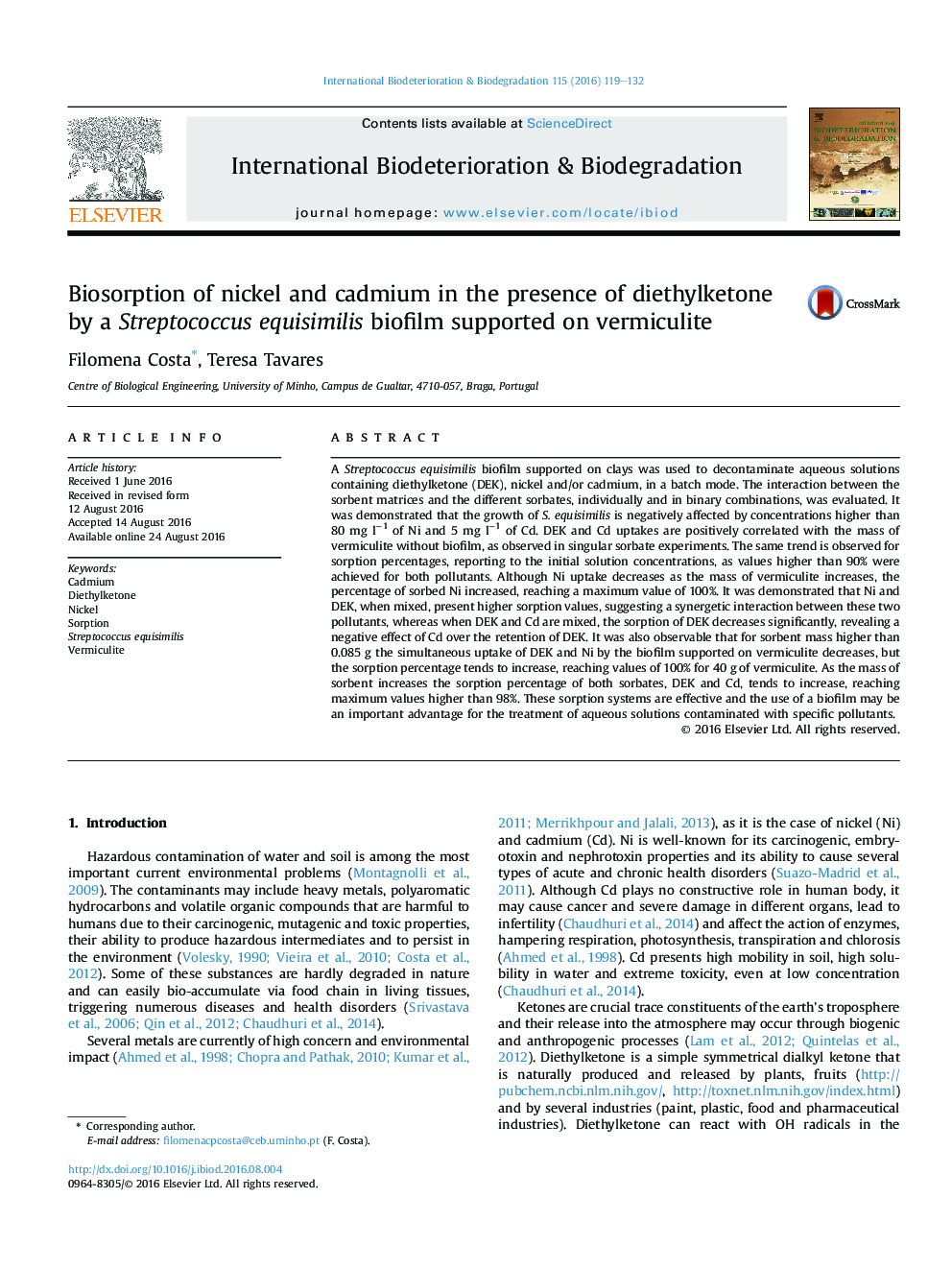| Article ID | Journal | Published Year | Pages | File Type |
|---|---|---|---|---|
| 4364167 | International Biodeterioration & Biodegradation | 2016 | 14 Pages |
•The toxicity limits for S. equisimilis are 80 mg/L of Ni and 5 mg/L of Cd.•The uptake of diethylketone, Cd and Ni by the sorbents and their combinations was determined.•Sorption efficiency was assessed for individual and binary solutions.•The added value of biosorption was established for this system.•The degradation path for sorbed DEK was monitored.
A Streptococcus equisimilis biofilm supported on clays was used to decontaminate aqueous solutions containing diethylketone (DEK), nickel and/or cadmium, in a batch mode. The interaction between the sorbent matrices and the different sorbates, individually and in binary combinations, was evaluated. It was demonstrated that the growth of S. equisimilis is negatively affected by concentrations higher than 80 mg l−1 of Ni and 5 mg l−1 of Cd. DEK and Cd uptakes are positively correlated with the mass of vermiculite without biofilm, as observed in singular sorbate experiments. The same trend is observed for sorption percentages, reporting to the initial solution concentrations, as values higher than 90% were achieved for both pollutants. Although Ni uptake decreases as the mass of vermiculite increases, the percentage of sorbed Ni increased, reaching a maximum value of 100%. It was demonstrated that Ni and DEK, when mixed, present higher sorption values, suggesting a synergetic interaction between these two pollutants, whereas when DEK and Cd are mixed, the sorption of DEK decreases significantly, revealing a negative effect of Cd over the retention of DEK. It was also observable that for sorbent mass higher than 0.085 g the simultaneous uptake of DEK and Ni by the biofilm supported on vermiculite decreases, but the sorption percentage tends to increase, reaching values of 100% for 40 g of vermiculite. As the mass of sorbent increases the sorption percentage of both sorbates, DEK and Cd, tends to increase, reaching maximum values higher than 98%. These sorption systems are effective and the use of a biofilm may be an important advantage for the treatment of aqueous solutions contaminated with specific pollutants.
